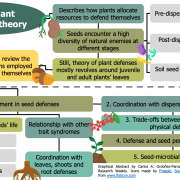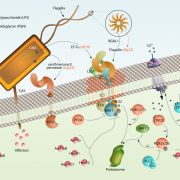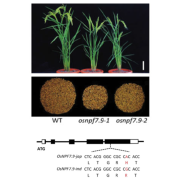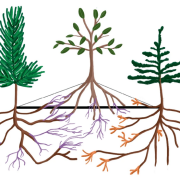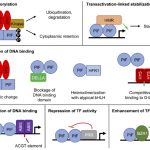Review: How mycorrhizal associations drive plant population and community biology ($) (Science)
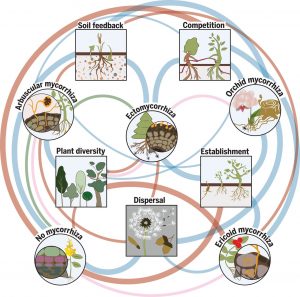 Great strides have been made in discovering the molecular players that allow plants and mycorrhizal fungi to establish their symbiosis. Here, Tedersoo et al. look beyond the single plant and address how these associations affect plant communities. Notably, they review the functions of the four evolutionarily distinct types of mycorrhizal associations separately and identify commonalities and distinctions: arbuscular mycorrhiza (AM), ectomycorrhiza (EcM), ericoid mycorrhiza (ErM), and orchid mycorrhiza (OM). In addition to the well-described contribution to nutrient uptake, mycorrhizal associations can facilitate communication between plants through the “common mycelial network”, condition soil, and confer protection against pathogens. Competition and cooperation outcomes can differ between kin and non-kin, as well as within and between species. The authors categorize the impacts on community ecology as deriving from effects on plant dispersal, establishment, and coexistence. (Summary by Mary Williams) Science 10.1126/science.aba1223
Great strides have been made in discovering the molecular players that allow plants and mycorrhizal fungi to establish their symbiosis. Here, Tedersoo et al. look beyond the single plant and address how these associations affect plant communities. Notably, they review the functions of the four evolutionarily distinct types of mycorrhizal associations separately and identify commonalities and distinctions: arbuscular mycorrhiza (AM), ectomycorrhiza (EcM), ericoid mycorrhiza (ErM), and orchid mycorrhiza (OM). In addition to the well-described contribution to nutrient uptake, mycorrhizal associations can facilitate communication between plants through the “common mycelial network”, condition soil, and confer protection against pathogens. Competition and cooperation outcomes can differ between kin and non-kin, as well as within and between species. The authors categorize the impacts on community ecology as deriving from effects on plant dispersal, establishment, and coexistence. (Summary by Mary Williams) Science 10.1126/science.aba1223
[altmetric doi=”10.1126/science.aba1223″ details=”right” float=”right”]


